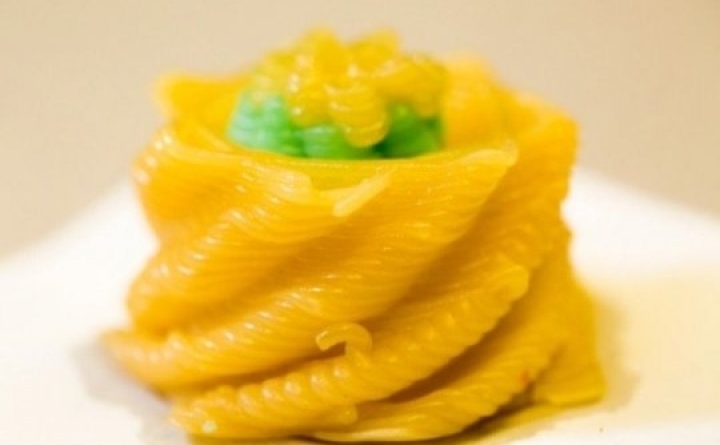Quick meal? 3-D printed dinner

We're all accustomed to having appliances on our kitchen counters, from toasters and blenders to coffee makers and microwaves.
If Mechanical Engineering Professor Hod Lipson has his way, we'll soon need to make room for one more -- a 3D food printer that could revolutionize the way we think about food and prepare it. Over the past year, Lipson and his students have been developing a 3D food printer that can fabricate edible items through computer-guided software and the actual cooking of edible pastes, gels, powders, and liquid ingredients -- all in a prototype that looks like an elegant coffee machine.
The printer is the result of a design project devised by Lipson and his students, led by Drim Stokhuijzen, an industrial design graduate student visiting from Delft University of Technology in the Netherlands, and Jerson Mezquita, an undergraduate student visiting from SUNY Maritime who is now a research associate in Lipson's Creative Machines Lab.
Lipson, a member of Columbia's Data Science Institute, sees 3D printing as a universal technology that has the potential to revolutionize lives by enabling us to design and manufacture things with unprecedented freedom: "If we can leverage this technology to allow artificial intelligence tools to design and create new things for us, we can achieve immeasurable potential."
Printing biomaterials led him to printing food, which he says is an especially exciting area: "It touches on something that's very basic to our lives. We've been cooking forever, but if you think about it, while technology and software have wormed their way into almost every aspect of our lives, cooking is still very, very primitive -- we still cook over an open flame, like our ancestors millennia ago. So this is one area where software has not yet permeated. And when software touches something, it takes off."
Lipson is especially excited about working with the ICC chefs and plans to continue the collaboration. "We've already seen that putting our technology into the hands of chefs has enabled them to create all kinds of things that we've never seen before, that we've never tried. This is just a glimpse of the future and what lies ahead.",writes ScienceDaily.com .